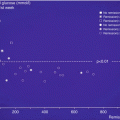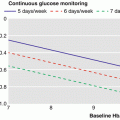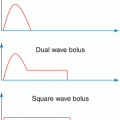Type of device and regulatory classification
Novel technology/relevant previous experience
Clinical applications and indications
Nature of exposure to the products – surface contact, implantation, ingestion
Risks inherent in the use of the product (procedure related)
Performance claims made in the device labeling and instruction for use
Component materials and substances
Disease process (severity and patient population being treated)
Demographic, geographic, and cultural considerations (age, race, gender)
Potential impact of failure
Period of exposure to the device
Expected lifetime of the device
Availability of alternative treatments and current standard of care
Ethical considerations
When considering the artificial pancreas, the four components are evaluated as medical devices. Although separately some components may be considered within the class 2a or b, the combined system is classified as class III according to MEDDEV.7
16.4.1 Artificial Pancreas
What research is needed?
Although a cure for diabetes is the ultimate treatment goal, the current approach focuses more and more on technological solutions to facilitate care and improve outcome. For an artificial pancreas, at least four components are identified, which may or may not have been tested and used separately before (Table 16.2).
Table 16.2
Artificial pancreas components
Continuous glucose monitoring system (CGM) |
Continuous subcutaneous insulin infusion system |
Algorithm |
Consumables and accessories |
For all components of the device, the requested information is summarized in Table 16.3.
Table 16.3
Preclinical and clinical documentation
Prior research |
Biocompatibility |
Sterility |
Shelf life |
Electrical safety |
MR safety |
Quality of results of the diagnostic devices during the clinical study |
Human factors |
Clinical studies are needed to assess safety and clinical performance and to investigate whether the device is suitable for its purpose and suitable in the population in which it is used. Clinical investigations are needed to assess in humans the safety and performance of the medical device.
For the artificial pancreas, clinical investigation into the performance of the complete system just as for the individual components is needed.
Current guidance for the artificial pancreas application has been summarized by the FDA in one document, which is not restrictive but provides a guidance (the content of Investigational Device Exemption (IDE) and Premarket Approval (PMA) applications for artificial pancreas device systems (November 2012)) [21].
For the EU, the previously mentioned guidelines are applicable.
Clinical investigations may be a randomized controlled trial, cohort studies, case control studies, or case series. The clinical investigation plan should clearly include the rationale, objectives, design and proposed analyses methodology, monitoring conduct, and record keeping of the clinical investigation (summarized in Table 16.4).
Table 16.4
General considerations for the clinical investigation plan
Objectives |
Appropriate subject population |
Minimization bias (randomization, as blinding is difficult) |
Identification of confounding factors |
Choice of appropriate controls |
Design configuration (parallel crossover factorial) |
Type of comparison: superior, noninferior equivalence |
End points that are clinically meaningful, clearly defined, and assessed at specific time points |
A testable hypothesis |
Statistical significance levels, power |
Sample size justification |
In general, feasibility and pivotal studies will be requested.
Feasibility studies will focus on the proof of concept and safety assessment in different carefully controlled situations (Table 16.5), whereas the pivotal studies are expected to demonstrate safety and efficacy in situations representing the actual use of the device in the target population [24–34].
Table 16.5
Potential outcome of the feasibility studies of an artificial pancreas system
Provide proof of concept |
Examine the effect of spec APDS control algorithms |
Validate performance of the APDS across the CGM range |
Examine how the APDS [4] functions in exceptional situations |
Combine stress situations |
Pilot test in closely supervised outpatient setting |
This target population could be adults with a diabetes duration above 6 months, followed in a staggered approach by the adolescents and younger kids. Different inclusion criteria can be used; one could consider as target group those with high HbA1c or hypoglycemia unawareness, hypo-fear, or frequent hypoglycemia.
Preferably a randomized controlled design is used, with, for example, the sensor augmented pump as control group.
Depending on the study population, different primary end points for the pivotal study can be considered, such as HbA1c with change from baseline, hyper/hypoglycemia regarding change in frequency or time in target range, severe DKA/Hypoglycemia, and/or change in frequency. Clear definitions of the primary end point must be provided.
For the secondary end points, many possibilities exist and can be included. Finally safety needs to be evaluated based on severe hypoglycemic events, diabetic ketoacidosis/ketone body development, and of course all technical problems encountered or device failure-induced problems.
Based on the safety and efficacy data provided in these studies, the regulatory bodies can approve or reject the device for the specific population.
Over the last decade, an increasing number of studies have been performed in Europe and the USA for the approval of the different components of the artificial pancreas. The combination of CGM and pump and a simple algorithm led to the low glucose suspense pump (VEO-Medtronic), initially only approved for Europe but recently as well in the USA. The second generation SAP8 with the SmartGuard has received a CE Mark in Europe as well as the DREAM algorithm. For the FDA the dossier is not yet complete to obtain approval, but the pivotal studies are ongoing.
One aspect recently raised by O’Keeffe et al. concerns the potential cyber (in)security [35]. Over the next years, these aspects will need to be considered for the approval of new technology in healthcare.







